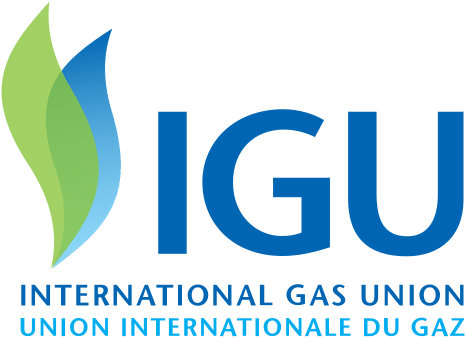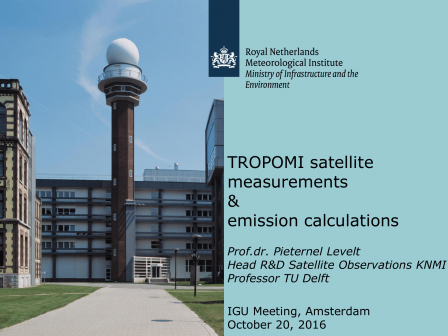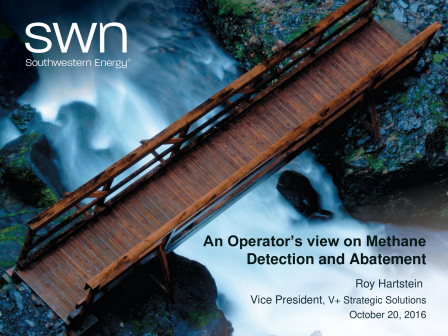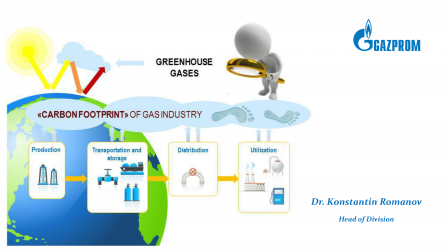The IGU Council week in Amsterdam, the Netherlands, 18-21 October, offered three workshops to the delegates. The second of them focussed on a deeper discussion relating to the issue of methane emissions.
The workshop speakers for the technical and economic issues were: Prof. Pieternel Levelt, Head of KNMI R&D Satellite Observations Department & Professor at Delft Technology University; Roy Harstein, Vice President, Strategic Solutions, Southwestern Energy; Paul Balcombe, Faculty of Engineering, Department of Chemical Engineering Research Associate, Imperial College of London; Dr Konstantin Romanov, Head of Division, Gazprom.
The second part of workshop was focussed on policy and regulatory issues and included panelists: Muhunthan Sathiamoorthy, GHG and energy efficiency expert, safety and operational risk, BP (CCAC Initiative); Joel Bluestein, Senior Vice President, ICF International; Mr Tim Gould, Head of Division, World Energy Outlook at IEA and Dave McCurdy, President and CEO of the American Gas Association.
(To access the presentations, click on the names of the speakers)
Prof. Pieternel Levelt, Head of KNMI R&D Satelite Observations Department & Professor at Delft Technology University, presented the scientific method and findings of a Dutch research project that measures methane levels from satellites. The project has collected data over the last 10 years.
Prof. Levelt said that methane is the second most potent greenhouse gas and that it is a complex problem. The COP 21 temperature target requires serious reductions in methane emissions.
Methane has very unpredictable growth periods and she showed that there has been a sudden increase in methane concentrations since 2006. This increase is difficult to explain. The sources of methane are many, and although there is a consensus that its cause is more than natural emissions, there are uncertainties to what the emissions really are.
Mr Roy Harstein, Vice President, Strategic Solutions, Southwestern Energy, spoke of Southwestern Energy’s measures to reduce methane emissions. Southwestern Energy is the third largest producer of natural gas in the United States and has measured the methane leakage on all their facilities over the last three years. They have participated in several studies and these, in addition to other US studies, have shown that there is a great variety of emissions depending on the type of production, the type of gas, the age of the facilities and similar. It is, therefore, important that each company understand their own emissions profile.
Southwestern found that in the first year of measurements the survey cost paid itself off by the amount of natural gas that was kept in the system after the reparations were done. The second year was close to break even, while the third year; the survey cost was just a little bit more than what was recovered.
Harstein said that there is a call for a proactive industry that measures their emissions. Through direct measurements, it will be possible to replace estimates with actual data, and this is important. Only a few facilities have very large emissions and doing something with these will make a great difference.
Southwestern Energy started an organization three years ago that is working with a target of 1 percentage leakage rate for the gas industry. It is called One Future and has set different targets for the different parts of the value chain. To reach the target, One Future’s recommendation is to allow the industry to set ambitious targets and to decide themselves what the rate should be, and at the same time allow for flexibility so that each company can decide the most cost effective solutions for them to pursue.
Mr Paul Balcombe, Faculty of Engineering, Department of Chemical Engineering Research Associate, Imperial College of London presented a white paper from the Sustainable Gas Institute at the Imperial College of London on Methane and CO2 emissions from the natural gas chain. His three key messages were the following:
- There is high variation in the estimates and supply chain and methane and CO2 emissions are highly variable.
- The majority of supply chain facilities/routes exhibit low emissions. There are a few facilities and equipment that can be characterized as super emitters.
- Technology can help reduce emissions, but technology is not everything. Progress on the detection of methane emissions is vital.
Dr Konstantin Romanov, Head of Division at Gazprom, talked about the difference between Global Warming Potential (GWP) and Global Temperature Change Potential (GTP). According to IPCC, the GTP metric is better suited to target-based policies, and GTP will be promoted by many organisations at COP 22 in Marrakesh later this year. IGU and the gas industry should also promote this and the opportunity is now. However, this should be done carefully.
He encouraged companies to provide their data on methane emissions and said that more varied international research on the field is necessary.
He also added that natural gas is not the largest methane emitter.
The second part of the methane emissions workshop was a panel debate lead by the IGU President, David Carroll. He started the session by asking: “How should the industry engage with policy makers to come up with enlightened policies?”
The panel consisted of the following speakers: Muhunthan Sathiamoorthy, GHG and energy efficiency expert, safety and operational risk, BP (CCAC Initiative); Joel Bluestein, Senior Vice President, ICF International; Mr. Tim Gould, Head of Division, World Energy Outlook at IEA and Dave McCurdy, President and CEO of the American Gas Association.
The messages from the panel were clear and consistent:
- The issue will not go away. There is need for actions, not words. The industry has to show that they take this seriously and is taking actions voluntarily.
- Transparency is key. The uncertainty is large; therefore transparency is key.
- More data is needed. There are many studies, especially from the US, but more information is needed from other places of the world.
- Support sensible regulations: industry can live with regulations, but not with a public perception that gas is not a good solution.
- There is a strong economic rational in recovering fugitive methane, although not all parts of the industry are in a position to monetize the recovered value.
- The super emitters are important. Identifying and taking actions for super emitters will make a big difference.
– It is critical to engage with regulators and other stakeholders through debate.
IEA is in the early stages of putting together a special report in the World Energy Outlook series on methane reductions that will be issued in the spring of 2017. The intention is to put together a toolbox, successful strategy that governments can use. They are currently engaging with the industry, including IGU, in the preparation of the report.
To read about the other workshops of the IGU Council week, 18-21 October, please follow the links below:
The Dutch Gas Industry Workshop
IGU Diplomatic Gas Forum held in Amsterdam, the Netherlands




